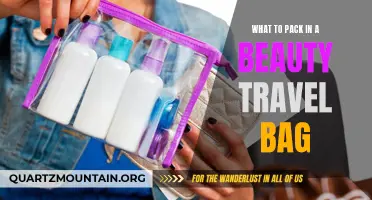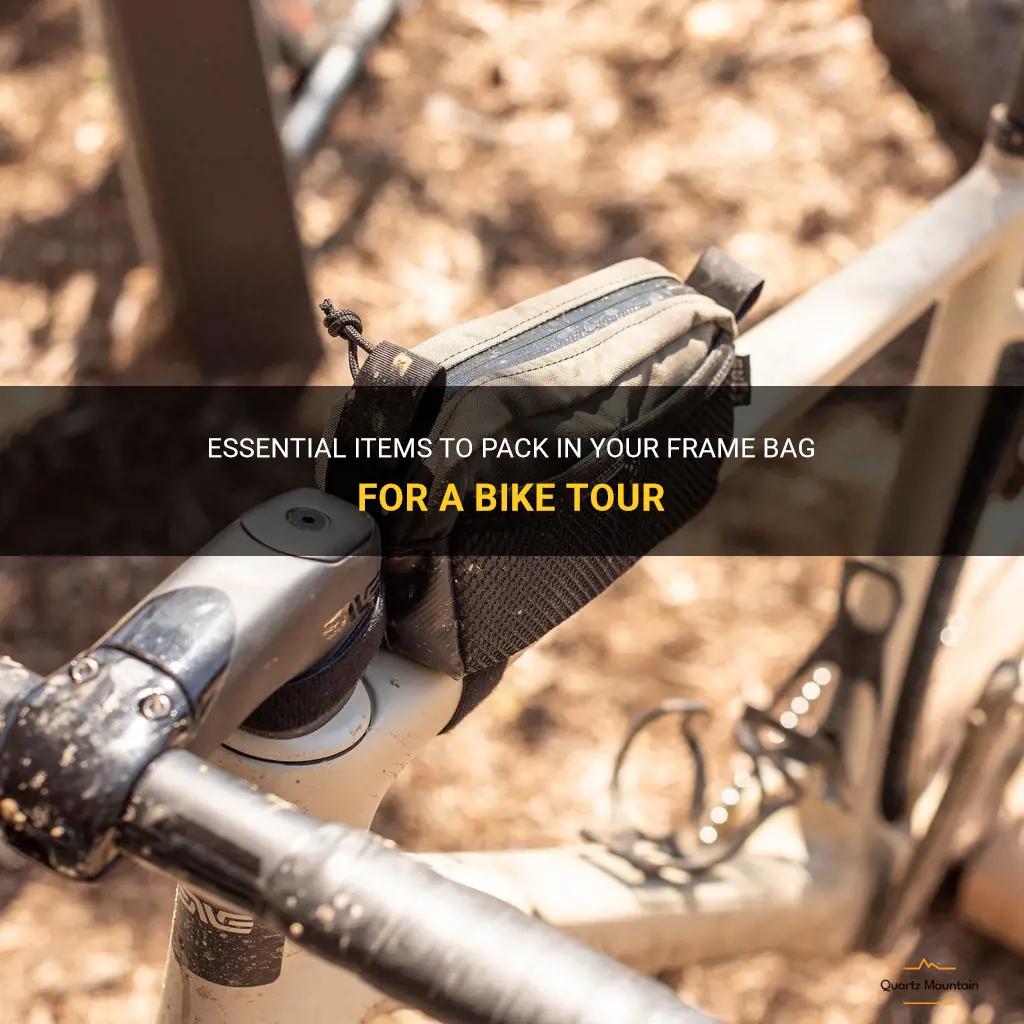
Embarking on a bike tour is an exhilarating adventure that allows you to explore new territories and experience the freedom of the open road. However, when it comes to packing for this two-wheeled journey, it's important to remember that space is limited, and only the essentials can make the cut. One crucial aspect of efficient packing is the frame bag, a handy accessory that attaches to your bike frame, providing quick and easy access to all your must-have items. From tools and snacks to first aid kits and spare tubes, these frame bags are a cyclist's best friend, ensuring you have everything you need right at your fingertips. So, gear up and get ready to discover the essential items to pack in your frame bag for a bike tour, because a well-prepared cyclist is a happy cyclist.
What You'll Learn
- What are some essential items to pack in a frame bag for a long cycling trip?
- Are there any specific tools or spare parts that should be included in a frame bag for emergency repairs?
- How should I organize the contents of my frame bag to maximize space and accessibility?
- Are there any considerations for packing food and water in a frame bag for long rides?
- Are there any safety items or emergency supplies that should be packed in a frame bag for unexpected situations?

What are some essential items to pack in a frame bag for a long cycling trip?
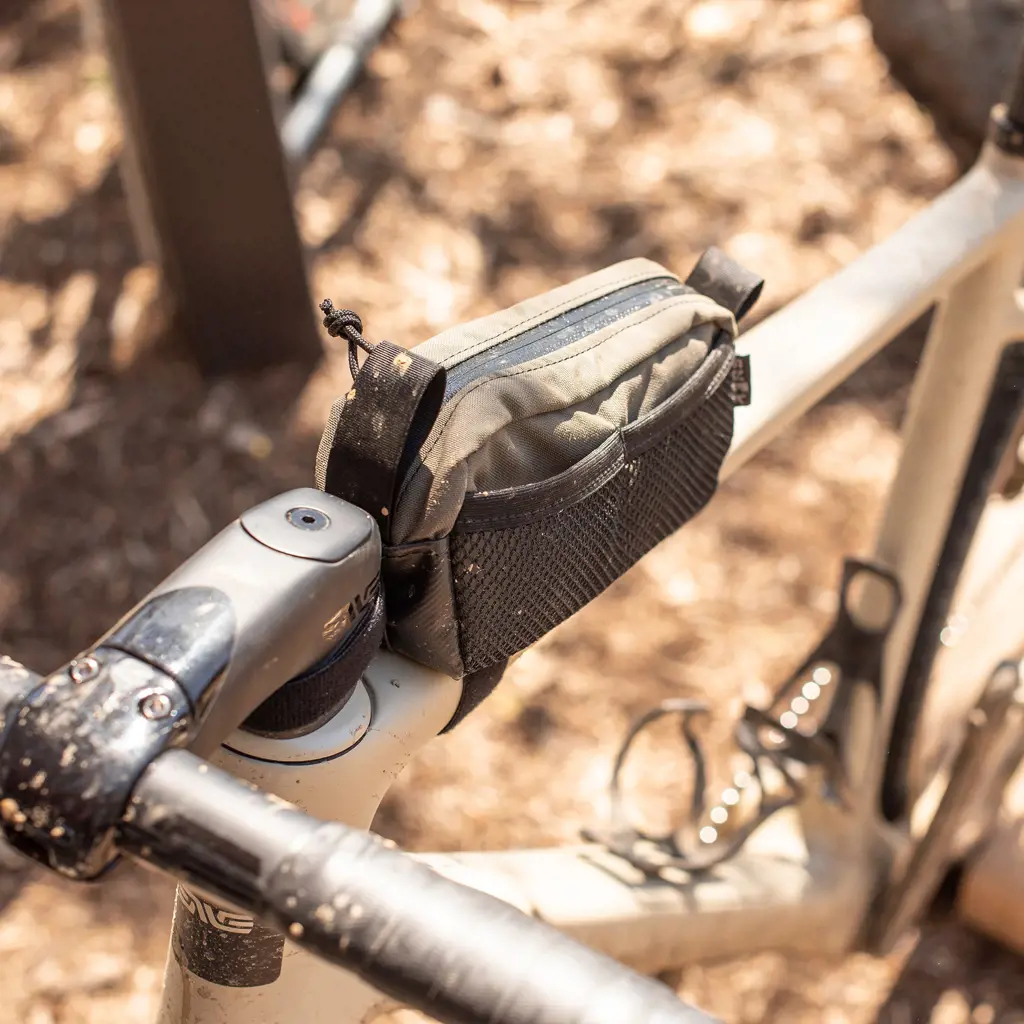
When planning for a long cycling trip, it is important to pack your frame bag strategically to ensure you have all the essential items for a successful and comfortable journey. The frame bag is a popular choice for storing items on a bike because it offers easy access and does not interfere with the overall balance and handling of the bicycle. Here are some essential items to consider packing in your frame bag:
Spare Inner Tubes and Patch Kit:
One of the most common issues you may encounter while cycling is a flat tire. Having spare inner tubes and a patch kit in your frame bag will allow you to quickly fix a puncture and get back on the road without much delay. It is advisable to carry at least two spare inner tubes to account for multiple flats or if you encounter difficulty patching a tube on the go.
Multi-tool:
A good quality multi-tool is a must-have for any cyclist. It typically includes various sized Allen keys, screwdrivers, and a chain tool. This tool will allow you to perform basic bike repairs and adjustments, such as tightening loose bolts or fixing a broken chain.
Tire Levers:
Changing a tire is made much easier with the help of tire levers. These small plastic or metal tools allow you to pry the tire away from the rim, making it easier to remove and re-install a tire. Make sure to pack a set of tire levers in your frame bag to assist with any tire-related issues.
Mini Pump:
A mini pump is essential for inflating your tires while on the road. Look for a compact and lightweight pump that can easily fit inside your frame bag. Some pumps also have a built-in pressure gauge, which is useful for ensuring your tires are inflated to the correct pressure.
Snacks and Energy Bars:
Long cycling trips require a lot of energy, and it is important to stay fueled throughout your journey. Pack some lightweight, compact snacks and energy bars in your frame bag to keep you energized between meals. Choose snacks that are high in carbohydrates and protein for sustained energy and muscle recovery.
First Aid Kit:
Accidents can happen, especially on long cycling trips. It is important to have a basic first aid kit in your frame bag to handle minor injuries and provide quick relief. Your first aid kit should include items such as band-aids, antiseptic ointment, pain relievers, and any personal medications you may require.
Spare Bolts and Zip Ties:
Bikes can experience vibration and constant movement, which can lead to loose or lost bolts. Storing a few spare bolts of various sizes and some zip ties in your frame bag can come in handy when needing to make quick repairs on the go.
Extra Layers and Rain Gear:
Weather conditions can change rapidly, especially during long cycling trips. It is important to pack extra layers and rain gear in your frame bag to stay comfortable and dry. Lightweight, waterproof jackets and compact insulation layers are great options to consider.
Cash and Identification:
Always carry some cash, a credit card, and identification with you during your cycling trip. These items can come in handy if you need to purchase something along the way or in case of an emergency.
Map or GPS Device:
If you are exploring unfamiliar territory, it is essential to have a map or a GPS device for navigation. Pack your map or GPS device in a waterproof case and store it in your frame bag for easy access whenever needed.
When packing your frame bag for a long cycling trip, it is important to consider the weight and balance of your bicycle. Distribute the weight evenly between your frame bag and other cargo-carrying accessories to maintain stability and control while riding. Additionally, make sure to regularly check and refill your water bottles to stay hydrated throughout your journey.
In conclusion, packing your frame bag with essential items can greatly enhance your long cycling trip. Prepare for potential bike repairs with spare inner tubes, a patch kit, and a multi-tool. Additionally, keep yourself energized with snacks and energy bars, and be prepared for unexpected weather conditions with extra layers and rain gear. By including these essential items in your frame bag, you can enjoy a comfortable and worry-free cycling adventure.
What to Pack for a Business Trip to Miami: Essential Items You Need
You may want to see also

Are there any specific tools or spare parts that should be included in a frame bag for emergency repairs?
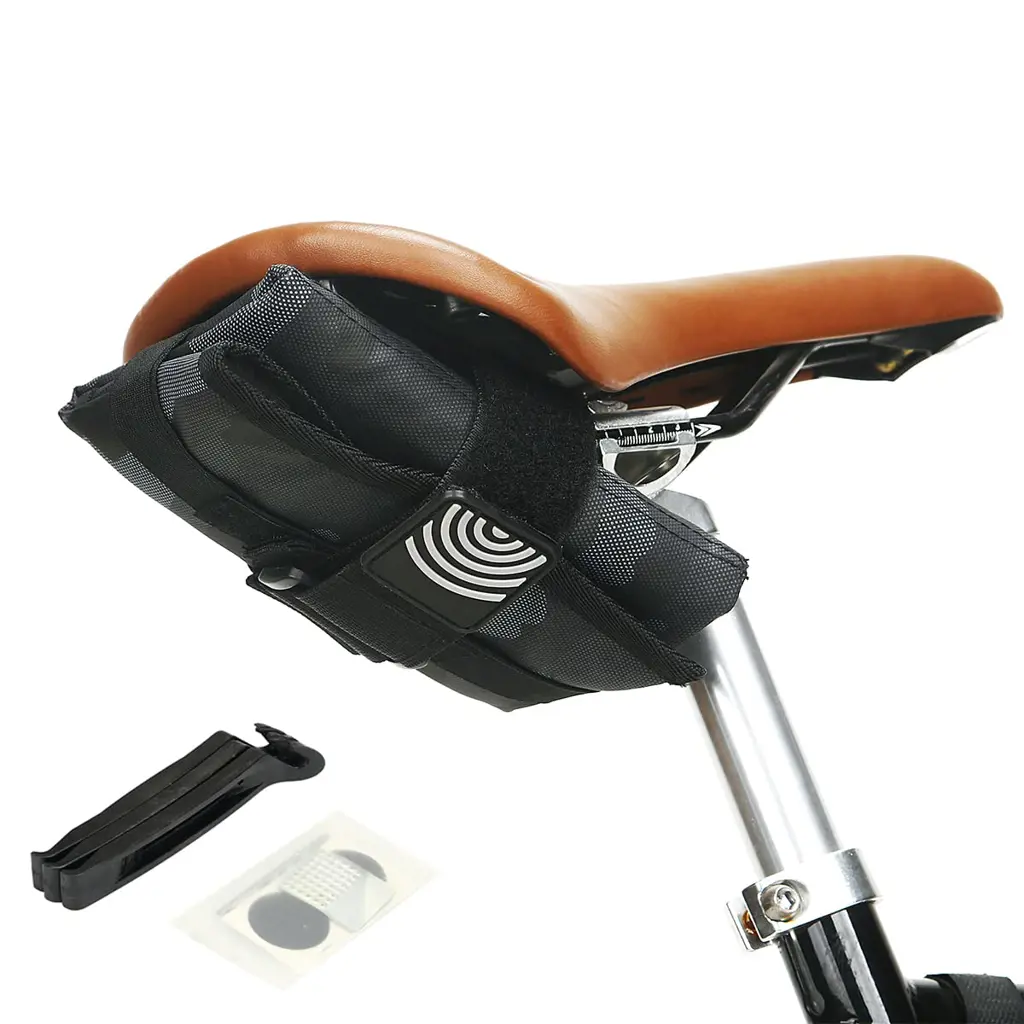
When going for a long bike ride or tour, having a frame bag is essential for carrying essential items such as spare parts and tools for emergency repairs. A frame bag allows you to have quick access to these items without the need to dig through your other bags or panniers. In this article, we will discuss the specific tools and spare parts that should be included in a frame bag for emergency repairs.
- Multi-Tool: A multi-tool is a must-have item for any cyclist. It usually includes a variety of hex wrenches, screwdrivers, and Torx keys. Look for a multi-tool that is compact and lightweight, making it easy to carry in your frame bag.
- Tire Levers: Flat tires are a common occurrence while cycling, so having a set of tire levers is essential. They allow you to easily remove the tire from the rim without damaging the tube. Look for durable and lightweight tire levers that can withstand the force required to remove the tire.
- Patch Kit: Along with tire levers, a patch kit is crucial for fixing punctured tubes. It typically includes patches, adhesive, and sandpaper for preparing the tube surface. Make sure to check the condition of the patches and adhesive regularly and replace them as needed.
- Spare Tube: In addition to a patch kit, carrying a spare tube is a good idea. Tubes can sometimes be difficult to patch, especially if the puncture is in a tricky spot. Having a spare tube allows you to quickly replace the damaged one and get back on the road.
- Pump or CO2 Inflator: Once you have fixed a flat tire, you will need a way to inflate it. Carrying a compact hand pump or CO2 inflator in your frame bag is essential. Choose a pump or inflator that is compatible with your valve type (e.g., Presta or Schrader) and can provide enough pressure to inflate your tires to the appropriate level.
- Chain Tool: A broken chain can quickly ruin a ride. Having a chain tool in your frame bag allows you to remove damaged links and rejoin the chain. Look for a compact chain tool that is compatible with your chain size.
- Spoke Wrench: If you experience a broken or loose spoke, having a spoke wrench can help you make temporary repairs. A spoke wrench allows you to tighten or loosen spokes to bring the wheel back into alignment. Make sure to carry a spoke wrench that matches the size of the spokes on your bike.
- Brake and Gear Cable: Carrying spare brake and gear cables can be a lifesaver if you experience a broken or frayed cable. Make sure to pack the appropriate cables for your bike's brake and gear systems. Additionally, having a cable cutter or sharp scissors can make cable replacement easier.
- Zip Ties: Zip ties are versatile and can be used for a variety of emergency repairs. They can help secure loose components, hold cables in place, and temporarily fix broken parts. Make sure to pack a few different sizes of zip ties in your frame bag.
- Duct Tape: Last but not least, duct tape is handy for quick fixes. It can be used to patch small holes or tears in gear and clothing, temporarily secure loose parts, or even create makeshift solutions. Pack a small roll of duct tape in your frame bag to be prepared for any unexpected repairs.
Remember, it's important to pack these items in a waterproof bag or wrap them in a waterproof material to protect them from moisture and rust. Additionally, regularly check your frame bag to ensure all tools and spare parts are in good condition and replace any damaged or worn-out items.
In conclusion, having a well-stocked frame bag can save you from being stranded on the side of the road or trail. By including essential tools such as a multi-tool, tire levers, patch kit, spare tube, pump or CO2 inflator, chain tool, spoke wrench, brake and gear cables, zip ties, and duct tape, you will be prepared for most emergency repairs. Being prepared will allow you to continue with your ride or tour without any major setbacks.
Essential Items to Pack for a Trip to Sa Pa: The Ultimate Traveler's Guide
You may want to see also

How should I organize the contents of my frame bag to maximize space and accessibility?
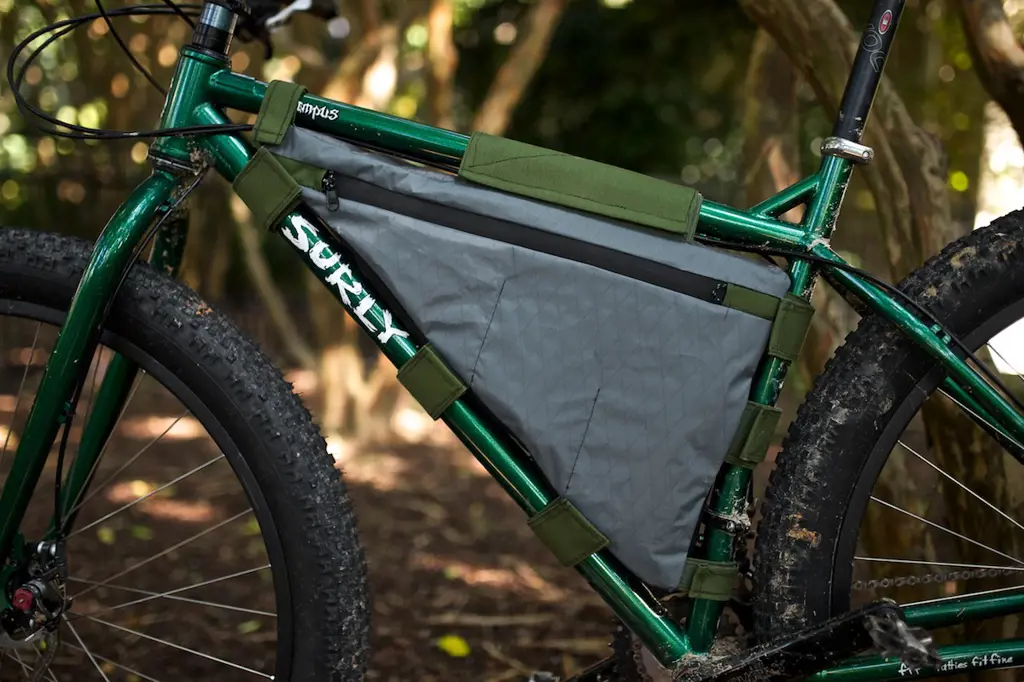
A frame bag is an essential piece of gear for bikepacking or long-distance cycling trips. It provides additional storage space for essential items such as tools, snacks, and extra layers of clothing. However, organizing the contents of your frame bag can be a bit of a challenge, especially if you want to maximize space and ensure easy access to your belongings. In this article, we will discuss some tips on how to effectively organize the contents of your frame bag.
- Categorize and prioritize: Before you start packing your frame bag, it is important to categorize your essential items and prioritize them based on their importance and frequency of use. For example, tools and repair kits should be easily accessible, while spare clothing or sleeping gear can be placed at the bottom. By categorizing and prioritizing your items, you can make it easier to find what you need quickly.
- Use packing cubes or dry bags: Packing cubes or dry bags can help you keep your belongings organized and prevent them from shifting around during your ride. These bags are available in various sizes and can be used to group items together. For example, you can use a small packing cube for your tools and repair kit, a medium one for snacks and extra clothing, and a large one for bulkier items such as a tent or sleeping bag.
- Consider weight distribution: The way you pack your frame bag can affect the balance and stability of your bike. To ensure proper weight distribution, place heavier items closer to your bike's center of gravity. This can help improve your bike's handling and stability on the trails. Keep in mind, however, that bulky items should be placed towards the bottom of the frame bag to avoid interfering with your pedaling.
- Utilize the vertical space: Frame bags typically have a long, narrow shape, which means you have limited horizontal space but plenty of vertical space. To maximize the use of this vertical space, you can roll up your clothing items instead of folding them. This not only saves space but also makes it easier to see what you have packed.
- Keep frequently used items accessible: Items that you may need to access frequently, such as snacks, a map, or a phone, should be placed in easily accessible pockets or compartments. Most frame bags have external pockets or straps that can be used to secure these items.
- Pack strategically for easy access: Think about the order in which you would need to use your items during a ride and pack accordingly. For example, you may want to have your tools and repair kit at the top to address any mechanical issues quickly. Similarly, pack your snacks, sunscreen, or rain jacket towards the top so that you can grab them without having to dig through your entire bag.
- Test and adjust: Before embarking on a long trip, it is always a good idea to do a test ride with your fully packed frame bag. This will help you identify any potential issues, such as items shifting around or causing discomfort. Use the test ride to make adjustments and fine-tune your packing strategy.
In conclusion, organizing the contents of your frame bag is essential for maximizing space and ensuring easy access to your belongings while on a bikepacking trip. By categorizing and prioritizing your items, using packing cubes or dry bags, considering weight distribution, utilizing the vertical space, keeping frequently used items accessible, packing strategically, and testing and adjusting, you can efficiently organize your frame bag for a more enjoyable cycling experience.
Essential Items to Pack for a Memorable Trip to the Isle of Wight
You may want to see also

Are there any considerations for packing food and water in a frame bag for long rides?
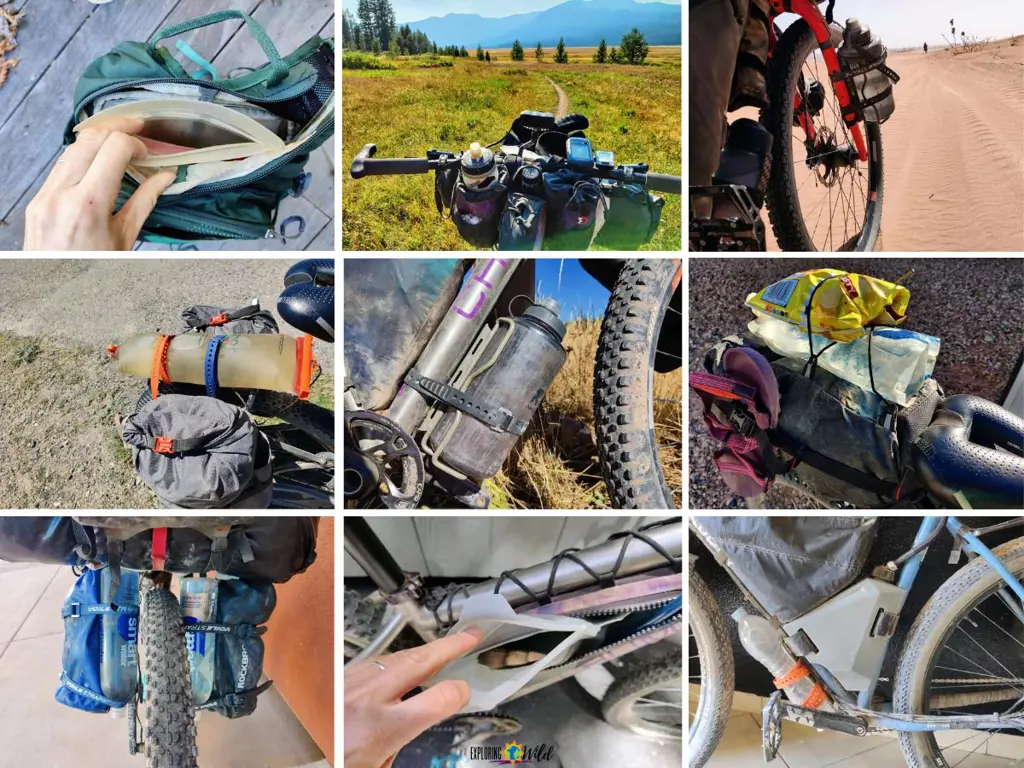
When embarking on long rides, it is crucial to ensure you have enough food and water to sustain yourself throughout the journey. Packing food and water in a frame bag is a popular choice among cyclists, as it allows for easy access and proper weight distribution. However, there are a few considerations to keep in mind when packing food and water in a frame bag for long rides.
Choose Lightweight and Non-Perishable Food:
When packing food for long rides, it is essential to choose lightweight and non-perishable options. These types of foods are easy to carry and have a long shelf life, ensuring they stay fresh and edible throughout your journey. Some examples of lightweight and non-perishable foods include energy bars, trail mix, dehydrated fruits, nuts, and jerky.
Pack Sufficient Water:
Hydration is crucial during long rides, so it is important to pack enough water to last you until the next water source. The amount of water you need will depend on factors such as temperature, terrain, and duration of the ride. As a general guideline, aim to carry at least two water bottles or a hydration bladder that can hold 2-3 liters of water. Additionally, consider carrying water purification tablets or a portable water filter in case you need to refill your water from natural sources such as streams or lakes.
Utilize Waterproof Containers:
It is essential to protect your food and water from moisture and potential leaks, especially if you ride in wet or unpredictable weather conditions. Invest in waterproof containers or dry bags to store your food and water in your frame bag. This will help prevent spoilage, contamination, and damage to other items in your bag.
Consider the Placement and Weight Distribution:
When packing food and water in a frame bag, pay attention to the placement and weight distribution. It is recommended to place heavier items closer to the bike's center of gravity, such as near the bottom of the frame bag. This will help maintain stability and prevent the bike from feeling top-heavy. Additionally, ensure that your food and water are securely packed to avoid any shifting or rattling during the ride, which can be distracting and potentially damage the items.
Regularly Check and Refill:
During long rides, make it a habit to regularly check and refill your food and water supplies. Take advantage of breaks or rest stops to assess your consumption and replenish accordingly. It is better to be proactive and ensure you have enough supplies rather than running out in the middle of your journey.
In conclusion, packing food and water in a frame bag for long rides requires careful consideration. Select lightweight and non-perishable food options, pack sufficient water, utilize waterproof containers, pay attention to weight distribution, and regularly check and refill your supplies. Following these considerations will help ensure you have a nourishing and hydrated journey while enjoying your long rides.
Essential Items Every Dad Should Pack in a Diaper Bag
You may want to see also

Are there any safety items or emergency supplies that should be packed in a frame bag for unexpected situations?
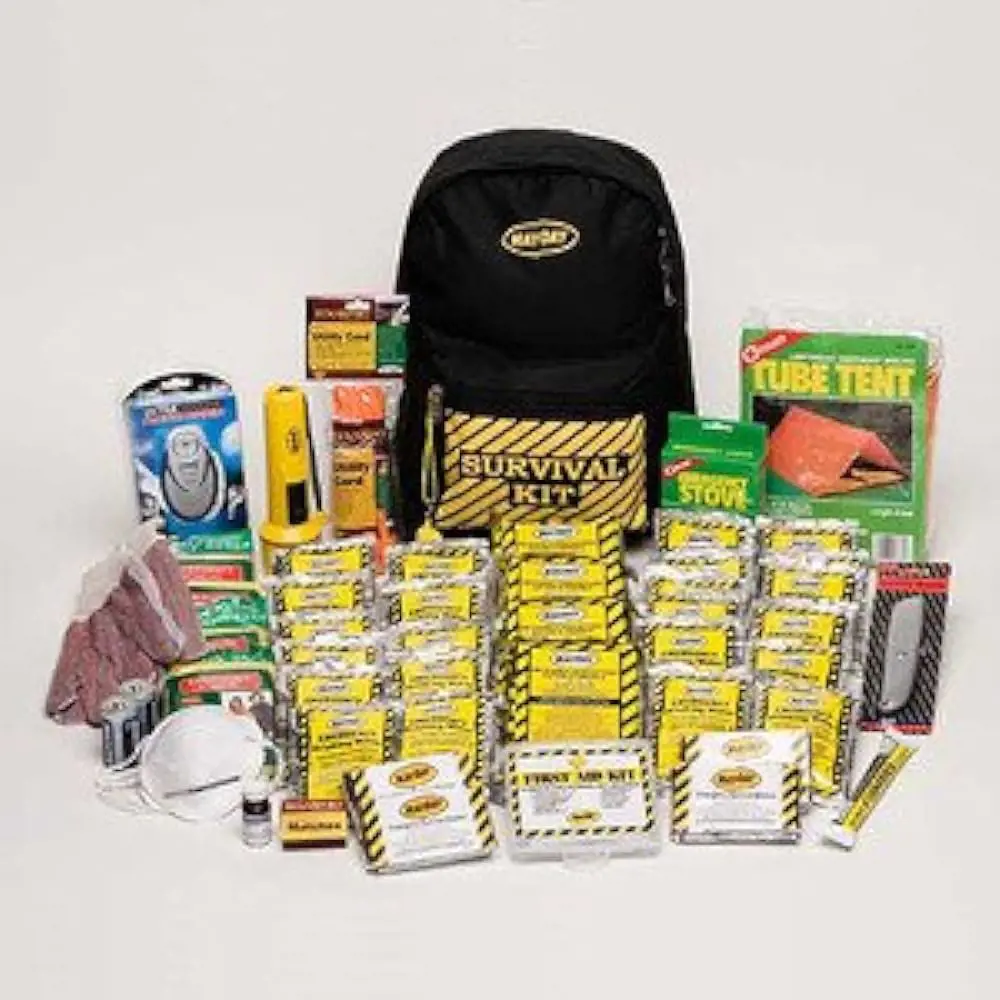
When embarking on an outdoor adventure, it is crucial to be prepared for any unexpected situations that may arise. One way to ensure your safety is by packing essential safety items and emergency supplies in a frame bag. In this article, we will discuss some of the items that should be included in your frame bag to keep you safe in case of emergencies.
First Aid Kit:
A first aid kit is a must-have item in any outdoor adventure. It should include essentials like bandages, gauze pads, adhesive tape, antiseptic wipes, pain relievers, and any necessary medications. Additionally, consider carrying items like tweezers for removing splinters, scissors for cutting bandages, and a CPR mask for any life-saving situations.
Multi-tool:
A multi-tool is a versatile tool that can come in handy in various situations. Look for a multi-tool that includes a knife, pliers, screwdrivers, a bottle opener, and a can opener. This tool can be used for minor repairs, opening cans, cutting ropes, and many other essential tasks.
Emergency Blanket:
An emergency blanket is a lightweight and compact item that can provide insulation and reflection in case of extreme weather conditions or if you need to stay warm while awaiting rescue. These blankets are designed to retain body heat and prevent hypothermia.
Fire Starter Kit:
Having a fire starter kit is essential for both warmth and cooking purposes. It should include waterproof matches or a butane lighter, as well as tinder or fire starter cubes to easily ignite a fire. Be sure to practice using your fire starter kit before heading out to ensure you know how to use it effectively.
Whistle and Signal Mirror:
A whistle is a simple yet effective tool to signal for help in case of emergencies. It can carry your sound farther than yelling and help rescuers locate you. Additionally, a signal mirror is also handy for attracting attention from a distance. It can reflect sunlight to catch the attention of search parties or passing aircraft.
Headlamp or Flashlight:
Having a reliable source of light is crucial during emergencies, especially in low-light or nighttime situations. Carry a headlamp or a flashlight with extra batteries to navigate through darkness and to signal your location if needed.
Energy Bars and Water:
In case of getting stranded or lost, having a supply of energy bars and water is essential. These items will provide sustenance and help you stay hydrated until help arrives or you can find your way back.
Remember, packing these safety items and emergency supplies in your frame bag is just the first step. It is equally important to familiarize yourself with how to use each item and regularly check and replace any expired or damaged items. Additionally, let someone know about your route and estimated time of return, so they can coordinate any search or rescue efforts if you fail to check-in.
In conclusion, packing essential safety items and emergency supplies in your frame bag is crucial for unexpected situations during outdoor adventures. By including items such as a first aid kit, multi-tool, emergency blanket, fire starter kit, whistle and signal mirror, headlamp or flashlight, and energy bars and water, you can increase your chances of staying safe and prepared during emergencies. Stay vigilant and always prioritize safety when enjoying the great outdoors.
Essential Items to Pack for a Memorable Figawi Weekend
You may want to see also
Frequently asked questions
When packing a frame bag for a bikepacking trip, it's important to prioritize the items that you'll need quick and easy access to on the go. Some common things to pack include a spare tube, tire levers, a multi-tool, a small bike pump or CO2 cartridges, and a patch kit. These items will help you with any minor bike repairs that may be needed while out on the trails.
Absolutely! Having easy access to food and snacks while on a bikepacking trip is essential for keeping up your energy levels. Consider packing lightweight and non-perishable items such as energy bars, nuts, dried fruit, or jerky. You might also want to pack a small cooking stove and some dehydrated meals if you plan on doing any overnight trips.
While frame bags are generally considered secure, it's always a good idea to exercise caution when packing valuable items. If you have any expensive electronics or sensitive items, consider packing them in a separate waterproof bag within the frame bag. This will provide an extra layer of protection against moisture and potential damage. It's also a good idea to keep a close eye on your bike when leaving it unattended, especially in public areas.
Yes, you can definitely pack extra clothing in a frame bag, especially if you're going on a multi-day trip or planning for changing weather conditions. Pack lightweight and versatile clothing items such as a waterproof jacket or windbreaker, a spare pair of socks, a hat or cap, and a warm layer like a fleece or thermal top. Roll or fold your clothing tightly to make the most of the limited space in your frame bag.


